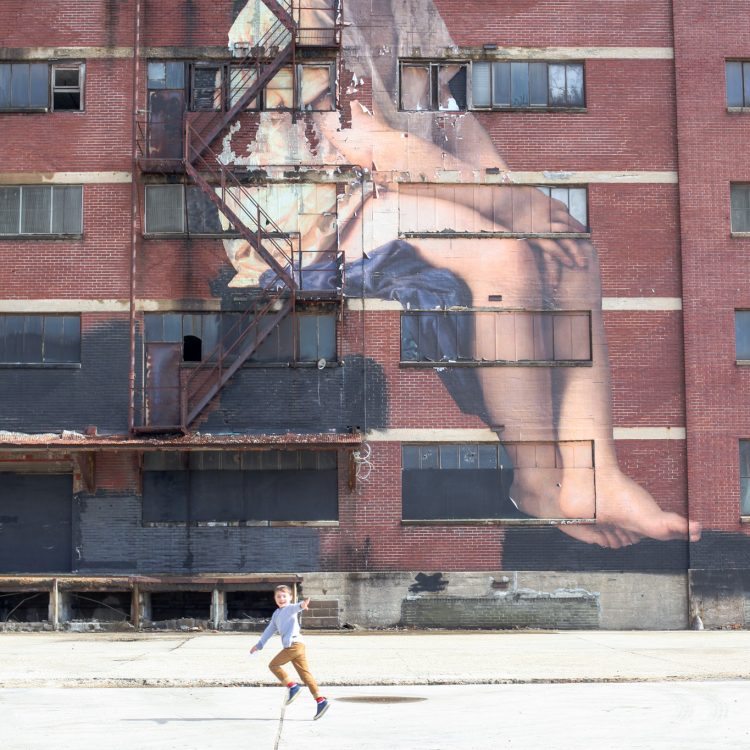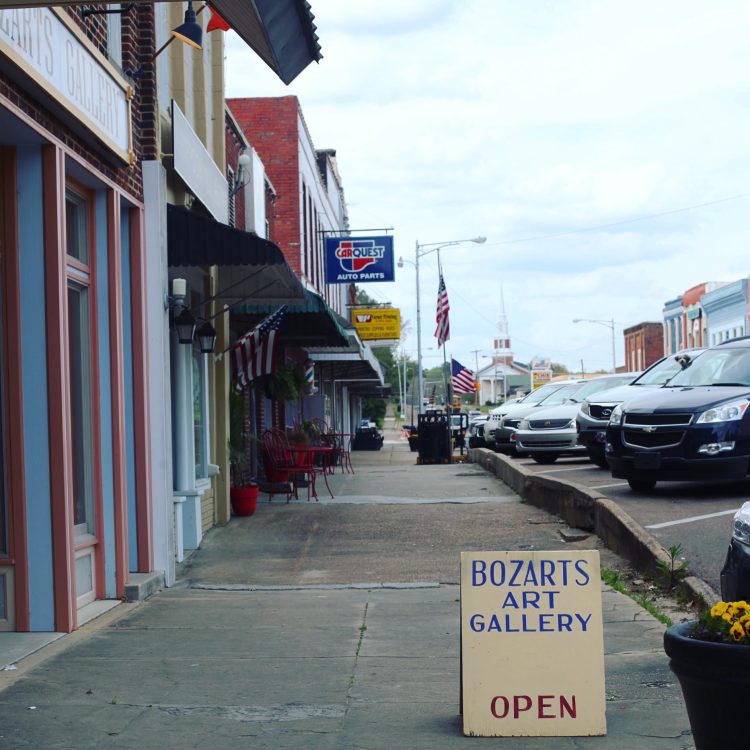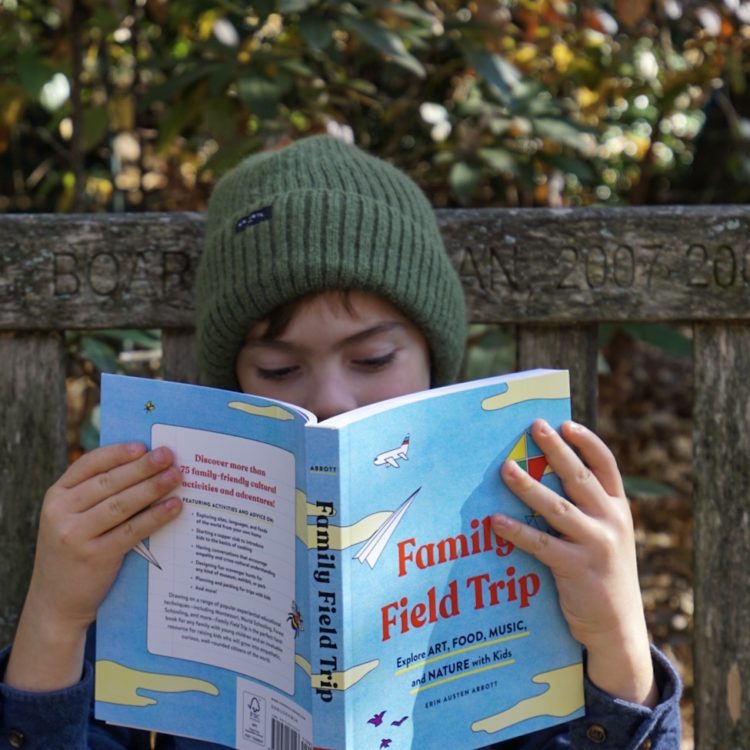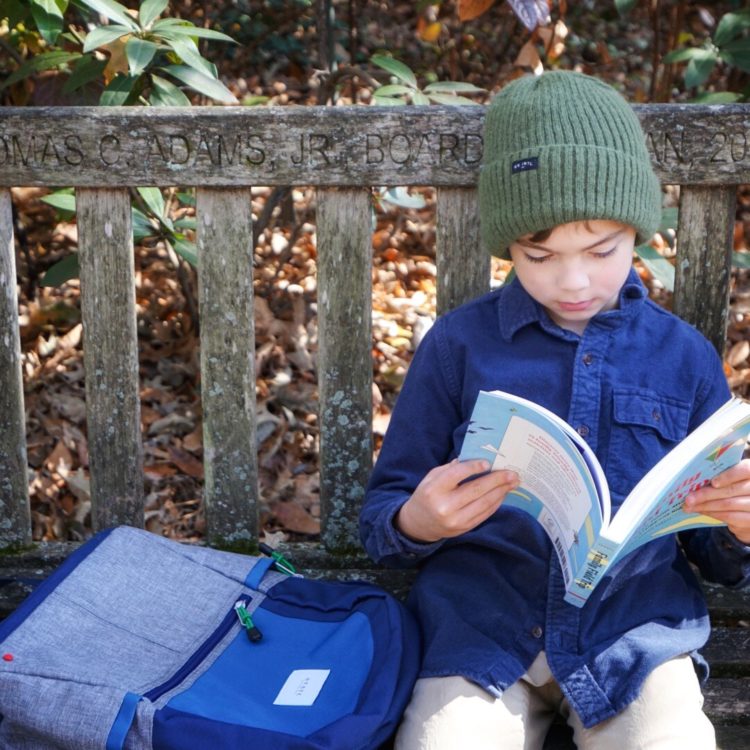Category: Around The World
Art Appreciation 101
“Appreciate art! Look at it. Listen to it. Talk about it. Create it. I think our kids will appreciate art if we, as parents, appreciate art. I grew up in a creative family. My mother was a portrait artist and my dad a music-loving and -playing theologian. Any time we kids wanted to draw or sew or make videos—for instance, a short comedic film entitled Attack of the Killer Basset Hound—my parents always obliged and never discouraged us or the mess that ensued. My older brother and sister are also artistic, and I, being the youngest, had the advantage of watching and learning from all of them. I knew from a young age that art was my thing. It was just in me, the love of the arts and the desire to create.”
—Hannah A. Carpenter is an artist and the creator of Little-Biscuits Notepads. She is based in Arkansas, where she lives with her husband Heath and their four children. You can find Hannah on Instagram: @hannahacarpenter.

You don’t have to be an artist or a designer to teach your children to appreciate art and design. Helping your children develop a love of art and design encourages them to consider the deeper meaning of things, fosters observational skills, and allows them to consider different perspectives.
Cultivating art appreciation in your children from a young age will open their minds to abstract concepts—a skill that will stay with them into adulthood—and provide opportunities to discuss history, materials, perspective, and artistic movements. I believe that we should treat design with the same appreciation as fine art. Design is woven into every part of our lives, from the shape of our chairs to the construction of our cars to the typography in our books and everything in between. Teaching children to notice design choices will open their eyes to all the ways that design impacts the world around them.



To teach art appreciation, it’s essential to be passionate about what you are teaching. While it might seem logical to begin with the classic examples from art history, I recommend teaching your children about works you love and want to know more about. Then, foster your sense of wonder so that you can pass that along in your lessons. Then, once they have developed a solid foundation for learning about and discussing art, they can move on to the classics.
Get creative with your art lessons—art appreciation doesn’t have to mean standing in front of a painting at a museum. For example, if you’re discussing Jackson Pollock, let your child go crazy with art supplies and a canvas. If you’re talking about Henri Matisse, encourage your children to go into their closets and pick some fun fabrics that they can try to recreate in their painting.
LESSON PLAN: MUSEUM EXHIBIT SCAVENGER HUNT
Lesson plans don’t have to be complicated or time-consuming. The point is to engage with your children, get them involved in the learning process, and have fun exploring together. Here’s a simple lesson plan that can be done at a museum locally, when you’re traveling, or even done from home. It requires a little planning and research on the front end, but it’s worth it once you are in the museum. You can adapt this plan to work at most exhibits and educational spaces, including aquariums, historical sites, planetariums, and more.
TOPIC: Experiencing art in a fun and interactive way
OBJECTIVE: To engage children in the experience of talking about art, observing art, and feeling engaged in museum visits
SUBJECTS: Art Appreciation, Art History, Social Studies, World History
ACTIVITY (This lesson can be done from home or when traveling):
Spend some time on the museum website to view their visiting exhibitions and permanent collection. Then make a list of scavenger hunt items, and create a printout for each child with open-ended descriptions, such as “Find a painting that is mostly blue” or “Find a piece of art with fruit in it.” Include a few finds from each museum room to keep them engaged throughout the whole tour. For younger children, you can include a picture key. Have a small prize at the end of the hunt for all children, as there doesn’t need to be a “winner.” For example, you can buy a treat from the museum gift shop or a new set of crayons. If you are visiting a museum while out of town and don’t have time to print the instructions for the hunt before your trip, you can use the hotel business center to print your materials, post covid I’m sure.
SUPPLIES:
- Printer
- Paper
- Writing tools
- Small prize
- Stickers
SUGGESTED READING LIST
- Speeding Down the Spiral: An Artful Adventure by Deborah Goodman Davis
- You Can’t Take a Balloon . . . series by Jacqueline Preiss Weitzman
- A Is for Artist: A Getty Museum Alphabet by John Harris
- Going to the Getty by Vivian Walsh
- Smithsonian: Timelines of Everything by DK
- The Museum Book: A Guide to Strange and Wonderful Collections by Jan Mark

VISITING MUSEUMS
Museums are a fantastic resource for building art appreciation and, thanks to the internet, you can now virtually visit just about any museum collection in the world. In addition, many public libraries also offer free museum passes to their patrons!
When exploring a museum with an art collection, think ahead to building a fun art lesson into your visit. This might mean doing some research in advance on what activities the institution offers for children or creating lesson plans that involve the works on display. If you’re visiting a museum in person, ask each member of your group to pick their favorite piece in each room and share what they like about it. Be sure to pack a notebook or paper and some colored pencils so that your child can write about the experience or draw some of their favorite pieces of art.


PUBLIC ART
Public art takes many forms—murals, sculptures, mosaics, fountains—and can reveal much about a place. In addition, these works make art more accessible, inviting, and less intimidating to the general public. I love this quote from Penny Balkin Bach’s book Public Art of Philadelphia: “Public art is a part of our public history, part of our evolving culture and our collective memory. It reflects and reveals our society and adds meaning to our cities. As artists respond to our times, they reflect their inner vision to the outside world, and they create a chronicle of our public experience.”
I remember visiting New York City for the first time as a child and seeing street art by the now-famous artist Keith Haring in the subway and on maps and garbage cans around the city. I was only ten, and I still remember feeling how art was literally all around me—seeing these urban works of art as art opened my mind up to the idea that the streets are an extension of the artist’s canvas.
Every time you visit a town or city, you can look for public artworks. Then you can talk to your child about the social significance of the work and discuss community values, social issues, and artistic forms. Does the work represent a more significant meaning of something happening in the local area or the country? How is it helping bring local people together? Does it look like it’s been there for a long time, or is it a new work? Does it look like it’s part of a larger art project (some places commission local artists to put their spin on the same sculpture, such as a fish, an elephant, or a tiger, and then place the works throughout the city)? So next time you walk by a piece of art with your child, don’t miss the opportunity to have a meaningful conversation together.
The beauty of public art is that it’s all around you. When traveling, you can often find great works of art in areas near universities and city centers. Museums sometimes list works of art in their cities so visitors can take self-guided walking tours; use museum websites and information desks and local tourist bureaus as resources. Please have your child sit down to sketch the art in their travel journal or trace a portion of the art when you spot public art. Be sure to use tools that won’t damage the artwork. Then have them fill in the colors and patterns on their paper, creating their versions of the artwork. This is a great time to talk about how artists develop specific styles and inspire others’ art without copying or stealing their ideas.
RECOGNIZING THE BEAUTY IN STREET ART
Street art and graffiti once rejected as an art form yet seen as a type of vandalism, are now more positively embraced. Artists like Banksy, M. Chat, Shepard Fairey, Saber, Barry McGee, Taki 183, Jean-Michel Basquiat, and Lady Pink have helped people see graffiti as a meaningful, beautiful artwork form, and galleries and museums around the world are exhibiting the work of graffiti artists.
“I recommend that parents encourage art appreciation by just having it around—whether it’s on your walls or in books. Kids will pick up on your enthusiasm for art. My daughter always came to museums and galleries with us. One of the ways I used to involve her in it was to play ‘What’s your favorite?’ and have her pick between different works. When she was just three or four, we would go to the neighborhood coffee shop together every week and work on drawings. She would also hang out with me in my studio, and we’d listen to music together and dance while I worked.”
— Mike Prater is a painter living in Memphis, Tennessee. You can find Mike on Instagram: @lofi_mikep.


I know this was a long blog post, but I think exploring art is a fantastic way to encourage your children to explore creatively, and it is essential to know where to start if you yourself haven’t been exposed to art in the same way. If you can’t get to a museum, look into local art galleries or artists’ studios that might welcome a visit from you and your child. Or just take a drive. Art is all around us. – Erin
Around the World Through Music

Family Field Trip… The Book!



